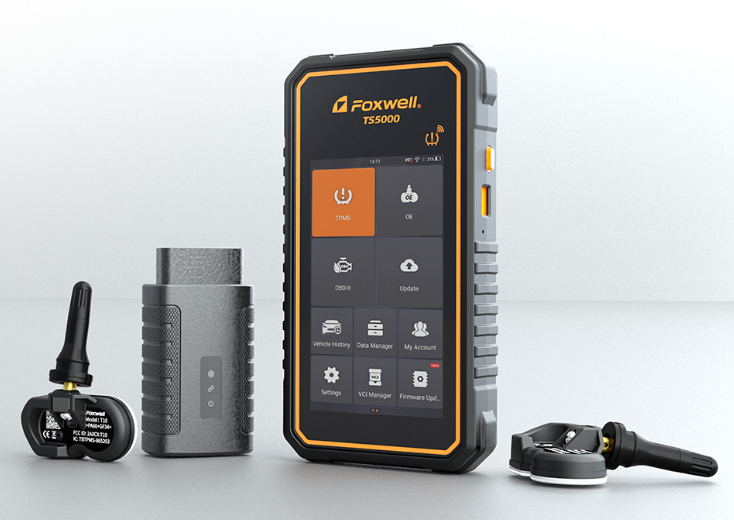Apr. 08, 2025
Even seasoned service professionals often have questions about TPMS (Tire Pressure Monitoring System) service. A frequently asked question is, What is the difference between TPMS relearn and TPMS programming? Here's the explanation:
Most people have probably never heard of a TPMS 'relearn' until their auto service pro tells them they have to pay for one. A relearn refers to the process of electronically pairing a new TPMS sensor to the vehicle's Tire Pressure Monitoring System. A TPMS relearn is always required when a new TPMS sensor or sensors are installed. Without pairing, or 'relearning,' the sensor doesn't 'talk' to the Tire Pressure Monitoring System and the system simply can't work.
Programming a TPMS sensor is an additional step in TPMS service.
TPMS vehicle relearn and TPMS sensor programming are distinct procedures. Aftermarket TPMS sensors labeled as programmable, universal, or clone-able require programming with the correct protocol and application information specific to the vehicle before installation. Once successfully programmed, the TPMS sensors must then be relearned by the vehicle.
TPMS relearn procedures vary by automaker. Some vehicles automatically relearn when driven, while others require a TPMS scan tool to complete the process. For many Asian makes and models, this may also involve connecting a tool to the OBDII port. Regardless of the procedure, the concept is the same: the vehicle’s TPMS receiver learns the sensors' unique ID numbers. In more advanced systems, the TPMS receiver also identifies the sensors' locations (right front, left front, right rear, left rear, and spare).
So, if a sensor fails or is damaged and needs replacement, don't be surprised if you're charged for both the new sensor and the relearn procedure.
To program these sensors, technicians may need to invest in specialized tools, training, and software. Additionally, these programming tools will need periodic updates to ensure compatibility with the latest vehicles and applications.

Multi-application TPMS sensors, like REDI-Sensor, arrive with the necessary protocols pre-installed, eliminating the need for shop programming. REDI-Sensor is ready to work with multiple vehicles' TPMS right out of the box, saving time on protocol uploads and reducing the risk of programming errors. This streamlines TPMS service, making it faster and more profitable.
Whether it's an OE sensor, a programmable sensor, or a multi-application sensor, every aftermarket TPMS sensor must be relearned to the vehicle. This relearn procedure not only connects the sensor to the vehicle's TPMS but also ensures that the system is functioning correctly. With the exception of some Chrysler and Mazda models that may be relearned to the vehicle through a driving procedure, a TPMS scan tool is required to complete the vehicle relearn procedure.
Resetting your TPMS can range from very simple to quite challenging, depending on your car model.
After installing new tires, the first step is to inflate them to the correct pressure. You can usually find the recommended pressure (in psi) on a sticker located on the driver’s side door panel. Use a tire pressure gauge to ensure that the tires are inflated to the specified pressure.
If your vehicle has an easy-to-use system, you can reset the TPMS by pressing the reset button, typically found under the steering column or in the menu system. It's best to press this button while the vehicle is stationary and the ignition is off. Once you start driving, the TPMS will recalibrate and adjust to the new pressure settings.
A TPMS relearn tool is useful for teaching your vehicle the correct tire pressure, tire locations, and sensor identification numbers. This tool is essential if you've replaced a valve sensor.
To use the TPMS relearn tool, place it near each tire valve. Some tools may also require a connection to the onboard diagnostic (OBD) port to start the process. The videos below demonstrate how to use the tool effectively.
Important Note: Not all TPMS relearn tools are compatible with every vehicle. Before purchasing, make sure the tool is compatible with your vehicle’s specific year, make, and model. If you own vehicles from different manufacturers, you might need to buy multiple tools.
When choosing a TPMS sensor, consider whether to buy a sensor specifically made for your vehicle or opt for a universal programmable TPMS. Since sensor specifications can vary by the year, make, and model, universal sensors need to be programmed with the correct settings for your vehicle—similar to a software update.
Programmable, multi-application TPMS sensors offer greater flexibility because the same sensor can be used across various vehicles. Many shops prefer to stock programmable sensors, as this allows them to cover a wide range of vehicles with just a few sensors, rather than needing hundreds of vehicle-specific ones.
You might also prefer a programmable sensor, especially if you plan to use the same set of snow tires on different vehicles. With a programmable TPMS sensor, the tire and its TPMS can be easily swapped between vehicles.
However, TPMS programming devices are typically more expensive. This is due to the advanced technology they use to read the sensor ID number, battery level, tire pressure, and tire temperature. Some devices even offer the ability to clone settings from one TPMS to another.

Copyright © Shenzhen Foxwell Technology Co., Ltd. All Rights Reserved 2009-2021 |
Sitemap
Powered by 



Links: Reanod